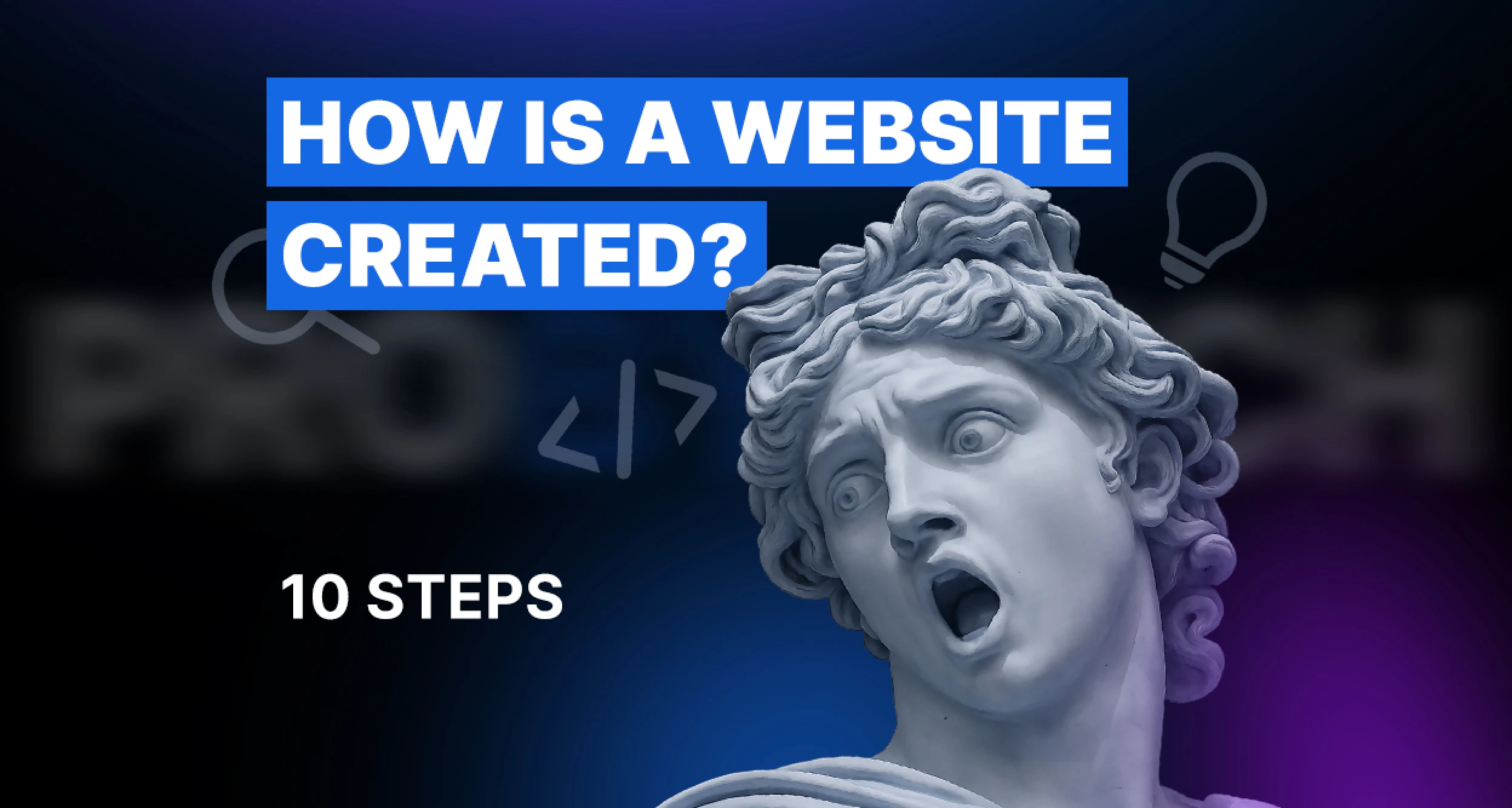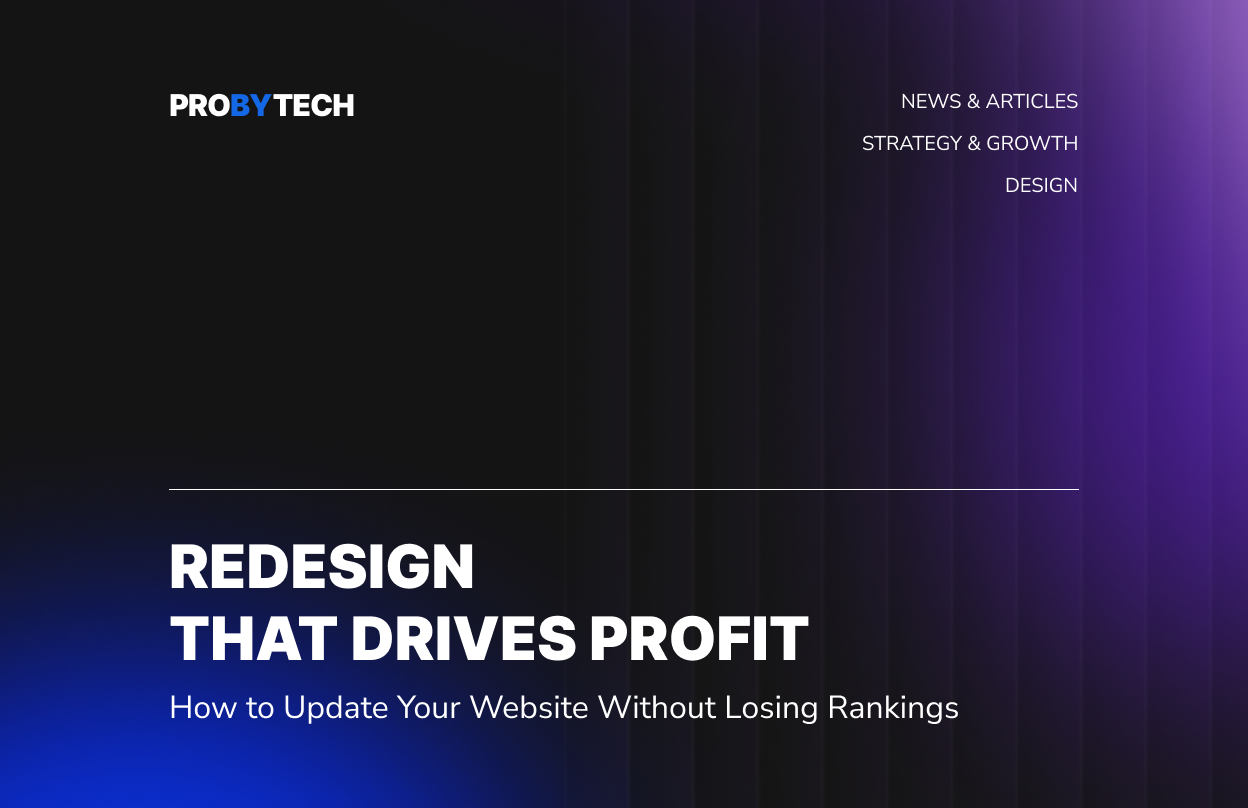How a Website is Created: 10 Stages from Idea to Launch 🚀


In 2025, having a modern, fast, and user-friendly website is not a luxury, but a necessity. But how does a simple idea transform into a fully developed online product? In this article, we, the Probytech team, will explain in detail the process of creating a website – from the first call to the technical support after launch.
1. Analysis and Website Strategy 📊
Website development always begins with a deep understanding of your business and customers. We research who will be using the website, their needs, pain points, and interests. This helps us create a target audience profile and understand what exactly should be on the site to make it effective.
At the same time, we conduct a competitor analysis – we look at how similar websites in your niche operate: what has been done well, what can be improved, and what solutions can be adapted to your business. This helps highlight your strengths and form a competitive advantage.
🔍 Based on this, we develop the overall strategic model for the website – defining what exactly needs to be in the project, which sections, features, style, and focus are needed to make the website clear for customers and deliver results.
2. Brief and Technical Requirements 📄
To create a website that truly meets business expectations, it’s essential to gather clear initial information. For this, we work with a brief – a short form or interview where the client shares details about their business, goals, desired functionality, preferred website examples, and any additional requests.
Then, based on the brief and analysis, our team prepares the technical specifications (TS). This is a structured document that clearly outlines:
- the pages to be included on the website;
- the necessary functions (such as request forms, catalogs, integrations, etc.);
- design and content requirements;
- other technical details.
🧩 TS is the project roadmap. It helps align expectations before the work begins, prevents misunderstandings in the future, and allows for clear planning of the development timeline.
3. Prototyping (for complex or large projects) 🧠
At this stage, we create a structural model of the website – a prototype, which helps visualize the layout of information, blocks, and functions before design development begins. This is especially important for complex websites, online stores, or platforms with many pages.
The prototype is a black-and-white layout, where we show:
- the hierarchy of content;
- the logic of user actions (e.g., the path to placing an order);
- places for key elements: menus, buttons, forms, banners, etc.
💡 This allows us to:
- see how navigation will work;
- align the interaction logic with the site;
- make changes quickly without incurring costs for design or code.
The prototype is like a blueprint before building a house. It allows us to plan everything in advance and avoid rework at later stages.
4. Website Design 🎨
After the structure is approved, we move on to visual design – creating a design that will be appealing, modern, and user-friendly.
Design is not only about being "pretty," but also functional – so that users intuitively understand where to click, how to find the information they need, and what to do next (e.g., leave a request or make a purchase).
We take into account:
– brand colors and style;
– target audience characteristics;
– responsiveness – ensuring the website looks good on a computer, tablet, and smartphone.
🖌️ The result is mockups of all key pages, which reflect the brand’s atmosphere and ensure a comfortable user experience.
5. Frontend Development 💻
At this stage, the design turns into interactive web pages – we implement the visual appearance of the site in code. This is what users see and interact with.
The goal of frontend development is to make the site:
– responsive (easy to use on all devices);
– fast to load;
– intuitive to use.
We work with modern approaches, utilizing relevant frameworks, libraries, and utilities for styling – depending on the project’s goals and complexity.
⚙️ At this stage, the site already “comes to life” – you can click, scroll, and see how it adapts to different screens. However, functional logic (such as data saving, admin panel integration, etc.) is yet to come – this is handled by the backend.
6. Backend Development (Website Functionality) 🔧
Backend development is responsible for the functional part of the website – the behind-the-scenes processes that users don’t see, but without which the site wouldn’t function. It is the foundation that enables interaction between the interface and the database.
The main tasks of backend development:
– server and database configuration;
– integration with various systems (CRM, payment systems, social media, etc.);
– implementing logic for user interactions (registration, authentication);
– handling requests and data transfer to the frontend.
💻 We usually use modern programming languages and frameworks for backend development (e.g., PHP, Python, Node.js, Ruby on Rails) to ensure high website performance and stability.
7. Basic Website Content 📝
Once the website has its functionality in place, the next step is basic content filling – adding the main content that will appear on the pages.
This includes:
– adding text (company description, services, products);
– uploading images, videos, and graphics;
– creating structured data, such as product or service categories;
– configuring contact forms, integrating maps or office locations.
🖋️ It's crucial to fill the pages correctly and logically so that users can easily find the information they need. Additionally, SEO optimization of the texts is essential to improve the site’s visibility in search engines.
8. Website Testing 🧪
Testing is a critical stage where we check if the website functions properly and meets all requirements. Testing helps identify potential errors or malfunctions that may affect functionality or the user experience.
During testing, we check:
– performance (website load speed);
– responsiveness (how the site displays on different devices and browsers);
– functionality (whether all buttons, forms, integrations, and requests work);
– security (protection against unauthorized access and attacks);
– usability (user-friendliness).
🔍 Testing allows us to identify and fix any issues before the launch, minimizing risks for the website's future operation.
9. Migration to Domain and Hosting 🌐
After the site has passed testing and all errors have been fixed, the next step is migration to the client’s domain and hosting.
At this stage:
– the domain name (website address) is selected and configured;
– the migration to hosting is carried out – the server where the website files, database, and other resources are stored;
– security certificates (SSL) are set up to protect data.
⚡ This is a crucial stage, as proper domain and hosting configuration ensures quick access to the site, security, and stable operation.
10. Technical Support and SEO Optimization ⚙️📈
After the website launch, it’s important to ensure technical support and SEO optimization for stable performance and high search engine rankings.
Technical support includes:
– monitoring the website’s stability;
– regular updates to systems and components;
– fixing technical errors and improving performance.
SEO optimization focuses on:
– improving the website’s visibility in search engines;
– setting up meta tags, keywords, and content optimization;
– ensuring the correct structure of pages and content for better indexing by search engines.
🔧 This ensures that the site not only operates smoothly but also attracts more traffic, enhancing your online presence.
Summary
Creating a website is not just about "writing code." It’s a whole journey: strategy, design, technology, testing, and development. At Probytech, we go through this journey with each client – confidently, transparently, and with quality results.
🔎 Looking for a reliable partner to create your website? Contact us — and we’ll turn your idea into a real product.
Read next
- PROBYTECH
- News & Articles
- Web
-
How a Website is Created: 10 Stages from Idea to Launch 🚀









